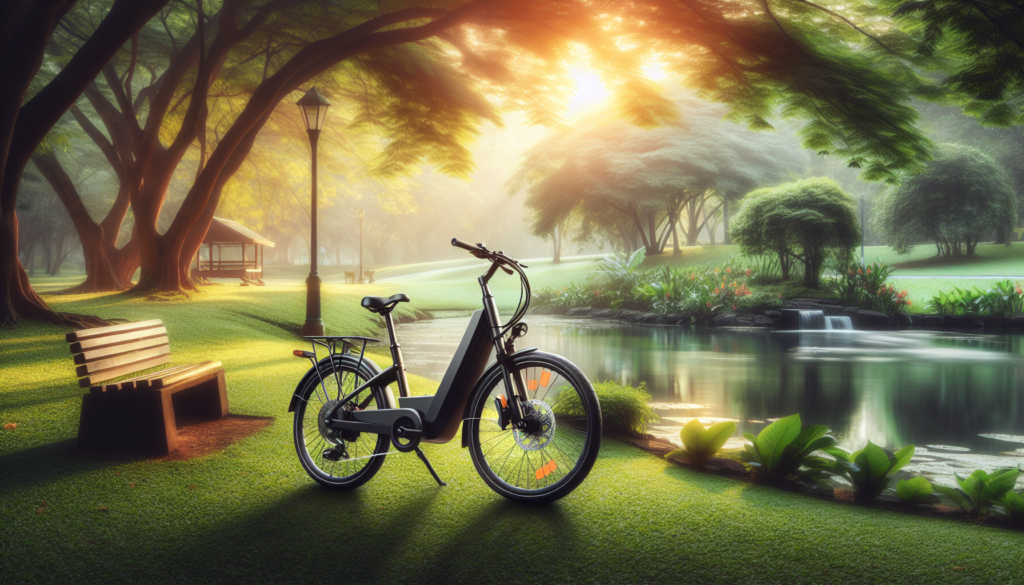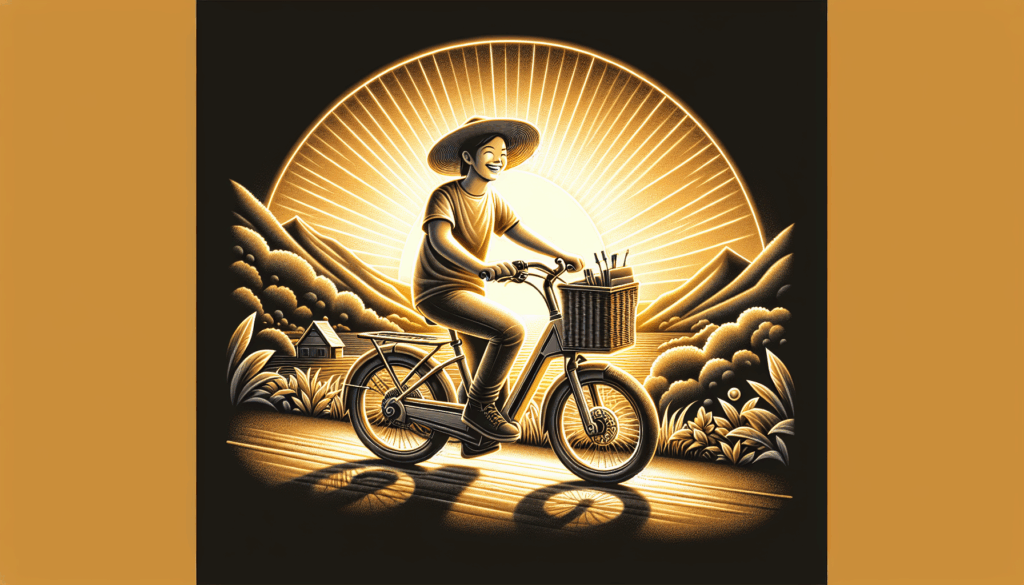
When exploring the options for modern electric bicycles, two notable contenders stand out in the market: the Xiaomi Ebike Himo Z20 and the ADO A20 Lite. Both bikes boast impressive specifications, making them appealing choices for everyday commuting or leisure rides. The Xiaomi Ebike Himo Z20 offers a dual electrical assist mode and a robust 36V 10Ah Li-ion battery, while the ADO A20 Lite impresses with its lightweight design, efficient belt system, and three electrical assist modes. With the ADO A20 Lite weighing only 16kg and featuring a comparable range, it is particularly noteworthy for those prioritizing portability without compromising on performance.
As you consider these options, it’s important to delve into the essential factors that can influence your decision and ensure you choose the right ebike for your needs.
Features Comparison: Xiaomi Ebike Himo Z20 vs ADO A20 Lite
When comparing features between the Xiaomi Ebike Himo Z20 and the ADO A20 Lite, several key points stand out. The Himo Z20 is equipped with a dual electrical assist mode, allowing users to choose between Dynamic Sports Mode and Cool Mode for a tailored riding experience. It boasts a 36V 10Ah Li-ion battery, providing a range of approximately 60km on a single charge. Additionally, the Himo Z20 has a maximum load capacity of 100kg and weighs 21.6kg, making it a robust choice for various riders.
Conversely, the ADO A20 Lite offers three electrical assist modes, featuring a slightly less powerful 36V 9.6Ah Li-ion battery that still delivers a similar range of about 60km. However, it weighs only 16kg, making it significantly lighter and easier to maneuver. The ADO A20 Lite’s belt system further adds to its appeal, offering a smoother and quieter ride compared to the chain system of the Himo Z20. Highlighting the ADO A20 Lite, its design and lightweight construction make it an ideal choice for those seeking portability without compromising on performance. Priced at RM 3,699, it provides excellent value for those who prioritize ease of transport and versatility in different riding conditions.
In contrast, the Xiaomi Ebike Himo Z20 is competitively priced at RM 3,099, making it attractive for riders who prefer its advanced dual assist modes and robust structure. Ultimately, the choice between the two models will depend on individual preferences, riding style, and desired features.
Understanding Electrical Assist Modes: Which is Best for You?
When selecting between the Xiaomi Ebike Himo Z20 and the ADO A20 Lite, it’s essential to consider their differing electrical assist modes. The Xiaomi Himo Z20 boasts a dual assist mode, allowing riders to choose between Dynamic Sports Mode for a boost in performance or Cool Mode for a more relaxed ride. This flexibility caters to varying riding preferences and conditions, ensuring that you can tackle both challenging terrains or a leisurely promenade with ease. The Himo Z20 is particularly well-suited for those looking for a versatile ebike experience that adapts to both their fitness goals and commuting needs.
On the other hand, the ADO A20 Lite stands out as it features three distinct electrical assist modes, enhancing customization and control over your riding experience. This model, while slightly pricier at RM 3,699, offers a superior lightweight build at just 16kg, making it more portable and easier to handle. For individuals seeking a more tailored approach to their cycling experience, the various assist modes on the ADO A20 Lite can significantly enhance comfort and efficiency, catering to those who want more from their ebike adventures. Ultimately, the choice depends on your riding style and what you prioritize in your cycling experience.
Battery Life and Range: Do the Specs Meet Your Needs?
When choosing between the Xiaomi Ebike Himo Z20 and the ADO A20 Lite, battery life and range are critical factors to consider. The Himo Z20 is equipped with a robust 36V 10Ah Li-ion battery that offers a range of approximately 60 kilometers, making it a reliable choice for those needing extended travel distances. Additionally, it features dual electrical assist modes, allowing riders to select either a Dynamic Sports Mode for a more energetic ride or a Cool Mode for a more relaxed journey. Weighing in at 21.6 kg, the Himo Z20 is slightly heavier but compensates with solid performance and durability, with a maximum load of 100 kg and a mechanical disc brake system for safety on diverse terrains.
On the other hand, the ADO A20 Lite presents an appealing alternative with its lightweight design, weighing only 16 kg. This e-bike comes with a 36V 9.6Ah Li-ion battery that also provides a range of around 60 kilometers but boasts three electric assist modes, enhancing versatility for varying riding experiences. Despite its lighter weight, it maintains a maximum load capacity of 100 kg, making it suitable for many riders. Priced at RM 3,699, it’s slightly more expensive than the Himo Z20, which retails at RM 3,099. However, the belt system and mechanical disc brakes of the ADO A20 Lite offer a smooth and reliable ride worth considering when evaluating battery life and range to meet your needs.
Weight Considerations: Mobility and Transportability
When it comes to choosing between the Xiaomi Ebike Himo Z20 and the ADO A20 Lite, weight is a key factor that significantly impacts mobility and transportability. The Xiaomi Himo Z20 weighs in at 21.6kg, which might pose some challenges when it comes to carrying or transporting, especially for those who may need to lift the bike onto public transportation or store it in compact spaces. With a sturdy chain system and robust construction, it is designed for durability, but users should weigh the pros and cons of its heavier frame if frequent transport is needed.
On the other hand, the ADO A20 Lite offers a remarkable advantage with its lighter weight of just 16kg. This not only aids in maneuverability but also enhances the ease of transport, making it an appealing choice for urban dwellers or commuters who need to navigate crowded spaces or stairs. The belt system in the ADO adds to its lightweight design, offering a quieter ride and requiring less maintenance. Ultimately, for users prioritizing mobility and transportability, the ADO A20 Lite emerges as a superior option, making it easier to integrate cycling into a bustling lifestyle.
Max Load Capacity: Ensuring Safety and Comfort
When considering the Xiaomi Ebike Himo Z20 and ADO A20 Lite, understanding the max load capacity is critical for both safety and comfort during your rides. Both models have a maximum load capacity of 100kg, making them suitable for a variety of riders. This uniformity ensures that riders can enjoy a comfortable experience without compromising on safety regardless of which e-bike they choose. The Xiaomi Ebike Himo Z20 weighs 21.6kg, while the ADO A20 Lite is notably lighter at 16kg, which may influence transportation and maneuverability for some users.
Choosing the ADO A20 Lite could be particularly beneficial for those looking for a more lightweight option, especially if frequent portability is essential. The belt system in the ADO A20 Lite also contributes to a smoother ride compared to the chain system found in the Xiaomi Ebike Himo Z20. Both e-bikes are designed to handle their respective max loads efficiently, but for those who prioritize a lightweight frame along with an easy-to-use belt system, the ADO A20 Lite stands out as a more convenient and efficient choice for safe and comfortable commuting.

Pricing Breakdown: Value for Your Investment
When considering the pricing of electric bikes, the Xiaomi Ebike Himo Z20 and the ADO A20 Lite both present distinct value propositions that cater to varying needs. The Xiaomi Ebike Himo Z20 is priced at RM 3,099, which includes impressive features such as dual electrical assist modes and a robust 36V 10Ah lithium-ion battery that supports a range of up to 60 kilometers. Weighing in at 21.6 kg, this bike is designed for riders who appreciate versatility, offering a dynamic riding experience with its mechanical disc brakes and chain system. Therefore, for those who want enhanced performance with a moderate investment, this entry may be appealing.
On the other hand, the ADO A20 Lite, priced at RM 3,699, provides an enticing alternative that stands out due to its weight of just 16 kg and advanced belt system. It features three electrical assist modes, making it suitable for urban commutes or leisurely rides. Although it shares a similar range of approximately 60 km with the Xiaomi Ebike, the ADO A20 Lite’s lightweight design and mechanical disc brakes might attract those who prioritize portability and maneuverability. This price difference reflects not just the engineering but also the potential lifestyle enhancements that each bike offers, guiding you toward the option that best aligns with your cycling preferences.
Belt vs Chain System: Impact on Performance and Maintenance
When considering the Xiaomi Ebike Himo Z20 and the ADO A20 Lite, one crucial aspect to examine is the type of drivetrain system each bike utilizes: chain vs. belt. The Xiaomi Ebike Himo Z20 employs a chain system, renowned for its robust performance and the ease of replacement. Chains can handle various terrains efficiently, providing a solid traction experience. However, they typically require regular maintenance, such as lubrication and periodic cleaning, to ensure longevity and optimal performance. With a weight of 21.6kg, the Himo Z20 is slightly heavier, which may impact mobility, especially when riding uphill or maneuvering through urban environments. \
In contrast, the ADO A20 Lite, with its lightweight belt system, offers a quieter ride and reduced maintenance, as belts do not need lubrication. This feature may attract users who seek a fuss-free riding experience, supporting its appeal despite its higher price point of RM 3,699 compared to the Himo Z20’s RM 3,099. The ADO A20 Lite’s overall weight of 16kg further enhances its performance in city commutes, making it a more manageable option for frequent short trips. Ultimately, the choice between the two systems comes down to personal preference regarding maintenance and riding style. If you’re inclined toward a traditional biking experience and don’t mind a bit of upkeep, the Xiaomi Ebike Himo Z20 could serve you well.
However, if convenience and ease of use are priorities, the ADO A20 Lite’s belt system might be the smarter investment, especially considering its competitive features like a 36V 9.6Ah battery providing a comparable range of about 60km. Understanding these distinctions between the belt and chain systems is essential for making the best choice tailored to your biking needs.
Braking Systems: Mechanical Disc Advantages and Disadvantages
When comparing the braking systems of the Xiaomi Ebike Himo Z20 and the ADO A20 Lite, it’s essential to consider the advantages and disadvantages associated with mechanical disc brakes. Both models utilize this braking system, which delivers reliable stopping power, especially in wet conditions. The mechanical disc brakes are known for their durability and ease of maintenance, making them a practical choice for riders who prioritize long-term performance. However, one downside is that riders might need to adjust or replace the cables more frequently due to wear, impacting the overall braking efficiency over time.
Additionally, these brakes can be slightly heavier than hydraulic systems, which might affect the bike’s overall weight, although both options are still manageable for their respective loads. In contrast, while the ADO A20 Lite’s lighter weight of 16kg compared to the Xiaomi Ebike Himo Z20 at 21.6kg may appeal to many cyclists, it is essential not to overlook that the braking performance can also depend on the rider’s usage and riding style. With both models designed to handle a maximum load of 100kg, effective braking becomes critical for safety.
Therefore, whether you opt for the Xiaomi Ebike Himo Z20 or the ADO A20 Lite, ensuring that the mechanical disc brakes are well-maintained will significantly enhance your riding experience and safety on the road.

Final Thoughts on Choosing the Right Ebike
When it comes to selecting between the Xiaomi Ebike Himo Z20 and the ADO A20 Lite, both options provide excellent features that can cater to varied needs and preferences. The Xiaomi Ebike Himo Z20 stands out with its dual electrical assist modes and a robust 36V 10Ah Li-ion battery, ensuring longer rides with a maximum range of 60km. However, for those who prioritize a lightweight design and versatility, the ADO A20 Lite is a clear winner. Weighing in at only 16kg, it offers three electrical assist modes, making it highly adaptable to different riding styles and scenarios, despite its slightly lower battery capacity of 36V 9.6Ah.
Additionally, at RM 3,699, the ADO A20 Lite presents a worthwhile investment for those seeking efficiency combined with a sleek design. Ultimately, your choice between these two ebikes should be based on your individual needs and riding habits. If you’re looking for a powerful riding experience with enhanced dynamic features, the Xiaomi Ebike Himo Z20 could be the right match. On the other hand, if you’re seeking a lightweight and versatile option that still delivers a commendable range, the ADO A20 Lite certainly offers compelling advantages. Whichever you choose, both bikes are engineered to enhance your cycling experience while accommodating the modern commuter’s lifestyle.

Interesting comparison, but I wish they touched on the storage space in both ebikes. Would be great to know how much luggage I can carry on these ebikes.
Hello Cheryl Wong, thank you for sharing your thoughts on our comparison blog post! I completely understand your concern about storage space, it’s an essential factor to consider when choosing an ebike. Unfortunately, we didn’t have that information readily available at the time of our comparison. However, I’d like to suggest that you check with the distributors or manufacturers’ websites directly for storage capacity details of the Xiaomi Ebike Himo Z20 and the ADO A20 Lite. Alternatively, you can contact us via email at [email protected] or phone at +60 3-7890 3042 for further assistance. We’d be happy to help you find the information you need!
The pricing is quite competitive. However, what about the warranty and maintenance costs of these ebikes? Would be good to know how much it would cost to replace a battery or repair a faulty motor.
Hello Jeremy, thank you for bringing up the important questions about warranty and maintenance costs. At Eko Life Malaysia, we understand the significance of peace of mind when purchasing an electric bicycle. Our team would be happy to provide you with detailed information on warranty and maintenance costs for both the Xiaomi Ebike Himo Z20 and the ADO A20 Lite. To give you a better idea, our battery replacement costs start from RM 500 onwards, and motor repairs can be estimated with a prior assessment. For warranty specifics, I suggest you contact our customer service team directly via [email protected] or +60 3-7890 3042, and they will be happy to assist you further.
The lightweight design in the ADO A20 Lite is a major selling point for me. How about including some rider weight ranges for each of these ebikes? Would be helpful to know how these ebikes perform for heavier or lighter riders.
Hello Aishah Ali, thank you for your comment and for suggesting rider weight ranges for each ebike. I completely agree that this information would be helpful to prospects. Unfortunately, I couldn’t find any definitive guidelines from the manufacturers for maximum weight capacity for individual riders. However, we could look into reviewing load test data, or conducting a load test of our own. Alternatively, I recommend reaching out to our service team at [email protected] or call +60 3-7890 3042, where someone can assist you to weigh the best option for your needs.